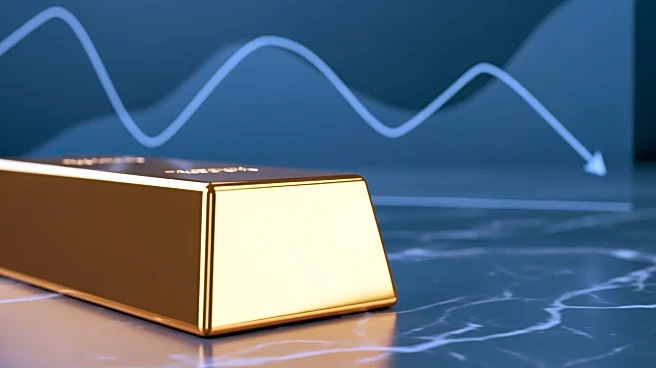What's Happening?
Gold prices have experienced significant fluctuations recently, with futures settling around $4,091.4 per ounce on November 14, 2025. The market saw a peak at $4,245 earlier in the week, driven by a weak
US dollar and speculation about the Federal Reserve resuming asset purchases. However, substantial profit-taking pressure led to a decline, with prices failing to breach the psychological level of $4,200. Analysts are now focusing on the resistance at $4,200 and support at $4,000, suggesting that gold will likely trade within this range in the coming weeks.
Why It's Important?
The fluctuations in gold prices are significant for investors and the broader economy. Gold is often seen as a safe haven asset, and its price movements can reflect broader economic sentiments. The resistance at $4,200 and support at $4,000 are critical levels that could influence investor behavior and market dynamics. A stable gold price within this range could indicate economic stability, while significant deviations might signal changes in market expectations regarding interest rates and economic growth.
What's Next?
Market analysts are divided on the future direction of gold prices. Some expect prices to move lower due to cooling expectations for Federal Reserve rate cuts, which could strengthen the US dollar and pressure gold. Others believe the current pullback is healthy, allowing for consolidation and potential upward momentum. The market's direction will depend on upcoming economic data and clarity on the Federal Reserve's monetary policy. Traders will closely monitor the $4,000 support and the balance between bulls and bears if gold tests $4,200 again.
Beyond the Headlines
The gold market's current situation highlights the complex interplay between economic indicators, investor sentiment, and monetary policy. The psychological levels of $4,200 and $4,000 are not just technical markers but reflect broader economic narratives. The resilience of gold above $4,000 despite hawkish Fed comments suggests underlying confidence in gold's long-term prospects, which could have implications for investment strategies and economic forecasts.











